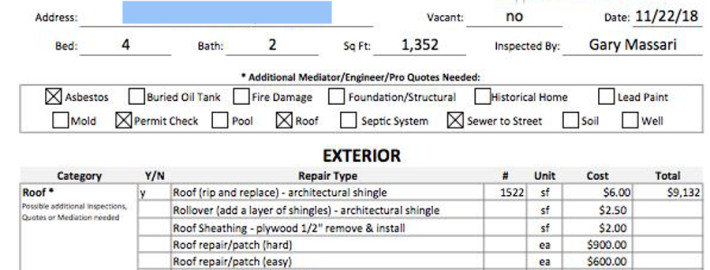A Q-&-A with KENT CLOTHIER
CEO | REAL ESTATE WORLDWIDE
In this Exclusive Interview, the Real Estate Mogul & Serial Entrepreneur Discusses Markets, Goals, Family, and his REI career.
Interview by Linda Pliagas
Recently our team had the opportunity to interview one of the most well-known and respected real estate entrepreneurs in the industry, Kent Clothier. We discussed everything from his most recent Find and Flip Summit to discovering who some of his greatest mentors are.
In this memorable interview, Kent also shares some touching personal photos and discussed how real estate investing can give individual investors the freedom needed to fully enjoy family life.

Realty411: Kent, you recently wrapped up the Find and Flip Summit with Grant Cardone. What was that all about?
KENT: The Find & Flip Summit was all about showing investors how to take the “next step” towards financial freedom. We had an amazing group of speakers and trainers from around the country coming – myself, Grant Cardone, Sean Terry, Pat Precourt, Justin Colby, Elena Cardone, Chris Clothier, Brett Tanner, and Frank McKinney are just a few of the big names joining us this year.
In fact, at last count, this outstanding lineup has bought and sold over 8,000 properties, sold over $1 Billion in 2017 alone, and manages or owns rental portfolios valued at over $1.3 Billion.
It truly was an incredible event showcasing the best-of-the-best, and it created massive impact to the hundreds of attendees who attended.
 Realty411: What are some markets that your team is most interested in acquiring properties in?
Realty411: What are some markets that your team is most interested in acquiring properties in?
KENT:Memphis, Phoenix, San Diego, Oklahoma City, Dallas/Ft. Worth, Houston, Las Vegas, and Little Rock are just a few of the markets that we are currently really focused on.
Realty411: Can you give our readers some advice on how they can get their investment career to the next level?
KENT: Pay close attention to who you are learning from. Do they have the scars? Do they have the experience and wisdom you desire? Are they living the life that you desire or are they just really good at marketing?
Your mentors should have bullet-proof systems, processes, online trainings, and lead-generation systems. We have worked really hard over the years at REWW and Memphis Invest to truly demonstrate what it takes at every level of the game and to be leaders in the market for anyone to follow.
Realty411: Who are some of your mentors or people who have impacted your way of thinking?
KENT:I have had mentors my entire life that have helped guide my career. My father played a critical role in early business and leadership development. He pushed my brothers and me harder than most people would think is normal, but it paid off. Outside of him, there have been a ton. Specifically, Sal Ricciardi, Roland Frasier, Frank Kern, my uncle – John Bloodworth.
Realty411: As a real estate entrepreneur, you are diversified by having an array of products such as 1-800-SELLNOW, Find Motivated Sellers Now, Find Cash Buyers NOW and Find Private Lenders NOW. Do you believe in diversifying in different markets as well for your real estate portfolio?
 KENT:I do. I own properties or notes in Florida, Tennessee, Texas, Arizona, and California. To your point, I have business interests in many facets of real estate, digital marketing, online training, software as a service, an investment fund.
KENT:I do. I own properties or notes in Florida, Tennessee, Texas, Arizona, and California. To your point, I have business interests in many facets of real estate, digital marketing, online training, software as a service, an investment fund.
My partners and I are always looking for ways to expand our reach and add to our portfolio of companies and properties.
Realty411: Kent, what are some of your goals for 2018 and beyond?
Kent: I am very excited about 2018 and our road map. We have great outlook and game plan to continue to expand our reach through our Boardroom Mastermind program and our REWW Academy program.
We feel there is a real void in the market right now and an area that is undeserved.
That area is the “tweener” investor or agent. What I mean is: There is a huge swath of people that know how to do the transactions and are making some money, but it’s not even close to being a business. Equally, there are a lot of people out there that have a great circle of influence – like a Meetup group or REIA – but have no idea how to turn it into a business.
No one is talking to these people and certainly not providing them with real leverage points to help them turn the corner and FINALLY get what they want….financial freedom. We can do that for them.
We have a highly-acclaimed online training academy (REWW Academy) that we have spent an enormous amount of money to develop over the last two years with a team of Ph.Ds. We used a proven learning ISD format (just like they do with college courses) and brought in the best experts to teach these classes.
So now, here we are with this massive asset that literally anyone in the country can leverage and point their team members, new hires, local network, local meetup, or local REIA club right to it to get trained by the best in the business.
They can buy it for their own purposes or sell it as a service to their group and get paid a commission by us. Bottom line, it’s “plug and play” and is a complete “white glove” business in a box for them.
The same is true of our Boardroom Mastermind This has quickly become the premier real estate investing mastermind in the country with almost 200 members from around the country.
Again, it’s an easy place for people to get their teams trained by the best, rub shoulders with the brightest and most successful investor network in the country, and help to grow and monetize their own network if they desire.
In closing, I’d like to point out that we have invested in a lot of infrastructure, so others won’t have to. They simply need to step into our world and let us show them how to make it their own.
 Realty411: How did you and your family turn your real estate passion into an empire? When did you decide to leave your previous occupations and focus only on real estate?
Realty411: How did you and your family turn your real estate passion into an empire? When did you decide to leave your previous occupations and focus only on real estate?
KENT:We all came into the business in the early 2000s in different cities and for different reasons. I was in South Florida, Chris was in Denver, and my father was in Memphis. It wasn’t until the mid 2000s that we really began to understand that we were doing something unique with our business model, our marketing, and our customer service. At that point, we turned the corner and went all in and decided we are going to become leaders in this industry because, quite frankly, there was just a sea of mediocrity out there, and we couldn’t stand it.
Realty411: What are some of your favorite ways to unwind and rejuvenate?
KENT:I love to hang with my wife and kids. Love to go to the beach here in San Diego, go paddle boarding, or just travel the world.
Realty411: Real estate is a relationship-based business, what are some ways investors can create rapport to enhance their careers?
KENT: Decide what your core values really are and only communicate from that place. What do you stand for? What do you stand against? Why are you doing what you’re doing? Why does your business matter? What impact are you trying to create in the market?
You see, people want to belong. We are all looking for our tribe and want to surround ourselves with people that inspire us or make us feel better about life. So, being clear on who you are first and then being very “out there’ with that information, allows people to quickly connect with you.
It also allows you to cut through all the noise and confusion and just surround yourself with people that are going to build you up, make you better, and make this business more successful. It will also allow you to easily run off the naysayers and time vampires. They won’t want anything to do with you. Best part, either way – you win.
Realty411: You’ve stepped back from speaking at many events, how can our readers learn from you if they cannot attend a live event?
Kent: We are not hard to find. We have hundreds of YouTube videos, Facebook posts, blog posts, articles, and a big social media presence. Go look up “Kent Clothier” or “Real Estate Worldwide” and you’ll find a ton of stuff out there.
But in the end, there’s nothing like one of our live events and getting that “raw-and-uncut” information straight from the horse’s mouth. Do whatever it takes to get there, but I’ll make it worth your time. Guaranteed. 🙂
Photographs courtesy of Kent Clothier. For Kent one of the best parts of being a real estate investor is the freedom to spend time with family. In these photos Seema, his wife, along with their daughters enjoy quality time with Kent.



 Ms. Holly Lynn’s Bay Area Multifamily Meetup Group attracts networking mavens for hungry investors to connect, invest, and retire rich.
Ms. Holly Lynn’s Bay Area Multifamily Meetup Group attracts networking mavens for hungry investors to connect, invest, and retire rich.





 The moment a lead that you reached out to contacts you, pay very close attention to what that person wants. If the lead in question just wants to ask what it is that you do, that’s good enough. Even if that lead is not ready to be converted into a customer, the fact that he or she has reached out to your business means that what you are offering in the way of services has caught the lead’s attention. You should double down, and nurture that lead until you can get what you want.That is a very good quality lead.
The moment a lead that you reached out to contacts you, pay very close attention to what that person wants. If the lead in question just wants to ask what it is that you do, that’s good enough. Even if that lead is not ready to be converted into a customer, the fact that he or she has reached out to your business means that what you are offering in the way of services has caught the lead’s attention. You should double down, and nurture that lead until you can get what you want.That is a very good quality lead.




 The new rules change how the IRS can audit an LLC or LP. In the past, an IRS audit of an LLC or LP taxed as a partnership involved auditing, settling and collecting tax shortfalls from each individual partner. In a master limited partnership (think oil and gas or real estate) with thousands of partners, this was very difficult.
The new rules change how the IRS can audit an LLC or LP. In the past, an IRS audit of an LLC or LP taxed as a partnership involved auditing, settling and collecting tax shortfalls from each individual partner. In a master limited partnership (think oil and gas or real estate) with thousands of partners, this was very difficult. As a service to our clients, we are charging just $295 for an amended and restated document. We will also include meeting minutes in which all partners approve of the new rules. It is your responsibility to make sure everyone signs the new agreement.
As a service to our clients, we are charging just $295 for an amended and restated document. We will also include meeting minutes in which all partners approve of the new rules. It is your responsibility to make sure everyone signs the new agreement.



